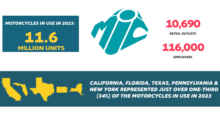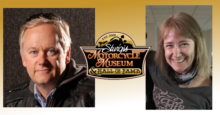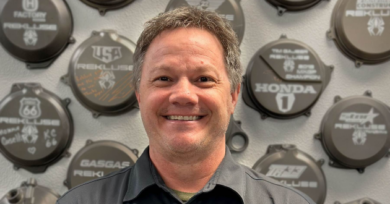State of the Industry webinar offers insights
 Industry leaders reflect on key data points of 2015
Industry leaders reflect on key data points of 2015
The final of a record five Powersports Business webinars in 2015 certainly ended the year on strong note with four industry-leading speakers providing insights into the year that was, and a look ahead.
Powersports Business’ fourth annual State of the Industry webinar, which served as a supplement to the 2015 annual Market Data Book, featured Tim Buche, president and CEO of the Motorcycle Industry Council; Robert Grant, business development engineer for CDK Global Recreation; Noel Lais, vice president of operations of Spader Business Management; and Jim Woodruff, chief operating officer of National Powersport Auctions. Liz Keener, managing editor of Powersports Business, moderated the webinar, sponsored by MB Financial. An archive of the webinar can be found on the Powersports Business YouTube page at
youtube.com/powersportsbusiness1.
State of the Motorcycle Industry
Buche started off the webinar by highlighting the impact the motorcycle industry has made on the U.S. economy. In 2013, the motorcycle industry generated an estimated $22.5 billion in consumer sales and services, state taxes and licensing. Of that number, Buche says that $6.5 billion, or 28 percent, is due to new vehicle purchases.
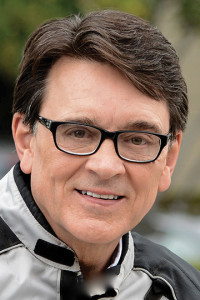
“We’re excited to see when we’ve got motorcycles in 6.94 percent of the U.S. households. That is significant,” Buche said. The percentage of U.S. households with motorcycles translates to approximately 10.5 million motorcycles owned. The number of motorcycles that are estimated to be in use is also high, landing at 10.1 million. As Buche noted, the gap presents opportunity for the dealers; with 400,000 bikes that are not in use at the present time ready to be serviced.
Buche broke down the numbers even further, sharing that of the 10.1 million motorcycles in use, 90 percent of those vehicles are used on-highway. The majority of motorcycles used on-highway have engines that are 750cc or larger at 61 percent.
Of the households that own motorcycles, on average there are 1.23 motorcycles per home, which is down from previous years. Buche says that the number of motorcycles per motorcycle-owning household is down in part to “new buyers who are buying their first motorcycle; they’re not quite ready for their second. We’re also seeing people trade more frequently, and there’s a healthy used market,” Buche said.
With a 2016 study still in the works, Buche reported on the 2014 average annual miles ridden on-highway, which decreased 7.2 percent from 2012. As an industry, on-highway motorcycles traveled 25.4 billion miles in 2014.
The industry has seen a positive change in the owner profile averages; the number of female riders has risen to 14 percent from 10 percent in 2003. Female riders totaled 1.2 million in 2014, doubling in just over a decade.
Average household income for motorcycle owners is $51,939. “We know that sometimes we are considered a luxury, durable, discretionary purchase. I like to say that the discretionary purchase is your first motorcycle; any subsequent motorcycle, or powersports product for that matter, is a necessity,” said Buche. “We need to look at our current customers and go sell them the next one.”
From a generational standpoint, sport bikes are much more popular with younger Gen Y, at 29 percent, than traditional or touring vehicles. And in 2014, 57 percent of Gen Y buyers purchased new units rather than used. Buche says that is a significant change from when more than 60 percent of the Gen Y buyers were purchasing used bikes a few years ago. By 2020, it’s projected that Gen Y, or Millennials, will own 39 percent of the motorcycles, 3 percent more than the Baby Boomers.
The breakdown of motorcycle ownership by ethnicity also provided interesting statistics. In the past six years, the amount of business from Asian owners has doubled. The percentage of Latino and African American owners has also increased. “An important thing to note: Do we look like the market we have, or the market that we want to have? Should we make changes in our approach, in our communications, in our staffing, to take advantage of the market that we see?” Buche asked.
Overall, of the 10.1 million motorcycles that are in use, 9.2 million are unique owners. Interestingly enough, including those owners, Buche says that 30.7 million people operated a motorcycle in 2014. “In my mind, that’s 21.7 million prospects. These are people who rented a motorcycle, may have test ridden, done a demo ride, talked a friend out of a bike,” said Buche. “Our current riders and owners are our best advocates. What are we doing through our current owner base to find their friends?”
Lais: Dealer profitability trending upward
Lais took a closer financial look at 10-year dealership trends from Spader Business Management 20-group dealerships. When comparing the net profit percentage of sales at Spader dealerships over the last 10 years, it’s clear that dealership owners are seeing positive trends.
“If we look at the trend line, we can see that overall in the last 10 years that profitability has increased; it’s an upward trend. We’re glad to see that,” said Lais.

For dealers, Lais says survival net profit is approximately 3.5 percent, which is what needs to be earned to have the funds to invest in their businesses and to continue to operate. In the last 10 years, six of those years have been at the survival net or better. In 2014, the net profit percentage for Spader dealers was 4.5 percent, bringing nice growth to the industry.
New powersports sales saw a significant increase over the last decade. In 2014, new sales at Spader dealerships totaled approximately $6.2 million, the highest amount in the last 10 years. On the other hand, new powersports sales margins have decreased from over 12 percent in 2005 to just under 12 percent in 2014.
“Many of those dealers are experiencing increasing pressures on new margins in particular. … Part of that is the price of the units,” said Lais. “We’re seeing an overall decrease on margins on new units.”
Used powersports sales at Spader dealerships have grown over the last 10 years from the low $700,000s up to almost $1.2 million in used sales in 2014. Lais says margins on used unit sales have experienced a different trend than new powersports sales margins. In 2005, the used margin was 15.5 percent, and in 2014 the used margin was at 17.8 percent.
“What we’re seeing is that as margins are being squeezed on the new side, our dealers are finding ways to increase their margins on their used units,” Lais added. The average dealer is making more margin on used units then they were 10-15 years ago, Lais added.
With new sales increasing, inventory levels also increased over the last 10 years at Spader dealerships. Also, used powersports unit inventory has increased, but at a higher rate than new units. “One of the things that we find affects profitability of our dealers more than anything is stocking the proper inventory levels on units,” said Lais.
In 2014, the industry saw a decrease in inventory turnover, down below the trend line to 2.3. This change is likely because as sales were increasing, dealers were stocking up on inventory, and in 2014, the increase in stocking was greater than what was needed or warranted for the increase in sales.
Grant: Metric gross sales margin at 9 percent; V-twin at 15
Typically, unit gross margin percentages over the last five years and year-over-year have been flat, Grant reported of CDK Global Recreation findings from the approximately 1,900 dealerships in the U.S. and Canada that use the Lightspeed DMS.
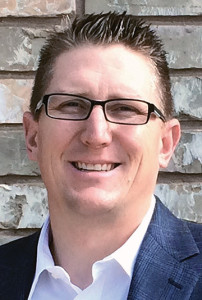
“Generally speaking everybody has been maintaining their margins,” added Grant.
In looking at 2015, metric lines were holding a 9 percent gross margin, while V-twin was at about a 15 percent gross margin. Dealers in Canada were in the middle, holding approximately 12 percent of their gross margin on their unit sales.
On the service end, average revenue per repair order in the last five years have seen a “vast increase.” Year-over-year average revenue within the metric category increased by $6.10, and V-twin saw a $26.22 increase. Dealers in Canada saw the average revenue per repair order decrease by $8.77 year-over-year.
Grant also discussed other areas of interest when looking at the data that was collected. On average dealers are collecting email addresses on only 35 percent of dealership transactions. This limits marketing opportunities and efforts to increase store traffic and customer satisfaction.
“As you improve the collection of that data, that will provide some additional marketing opportunities that may or may not be being leveraged at this time,” said Grant.
Woodruff: Pre-owned still a strong option
Woodruff finished the webinar with a recap of the wholesale market in 2015. Overall, National Powersport Auctions’ total auction volume was down 3 percent from 2014, and the average wholesale price (AWP) was down 2 percent.
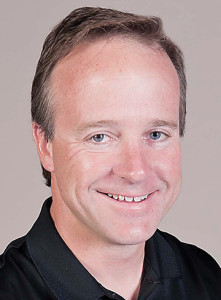
Woodruff says that most segments are down due to product mix: “Looking at the data, that could be a change in demand or a change in what’s being sold, and that’s primarily a change in what’s being sold.” The average model age is approximately 6.3 years old, which is up from 5.5 years in 2014.
According to the Motorcycle Industry Council, there’s a 3:1 ratio of pre-owned bikes to new bikes for on-road registrations.
“That’s interesting. In years past it’s been closer to 1.5 to 1 from on-road, and it’s been elevated over the last three years. One of the main reasons for that elevation is that as the new industry took a hit from the economic crisis, the pre-owned industry didn’t take as big of a hit,” said Woodruff.
As for current wholesale trends, wholesale pricing is following typical seasonality (transition from fall pricing to spring pricing). NPA has also received more requests this year than the last several years combined from new lenders looking to enter the powersports space or expand their presence.
NPA’s expectations for 2016 include solid retail sales, additional new lender participation, data-driven dealerships and overall stable wholesale pricing and volumes. “These are some of our beliefs, and like the weather forecaster, we’ll find out whether or not we were on the right track,” said Woodruff. “But we believe that retail sales will remain solid and will likely be up for both new and used units in 2016.”



